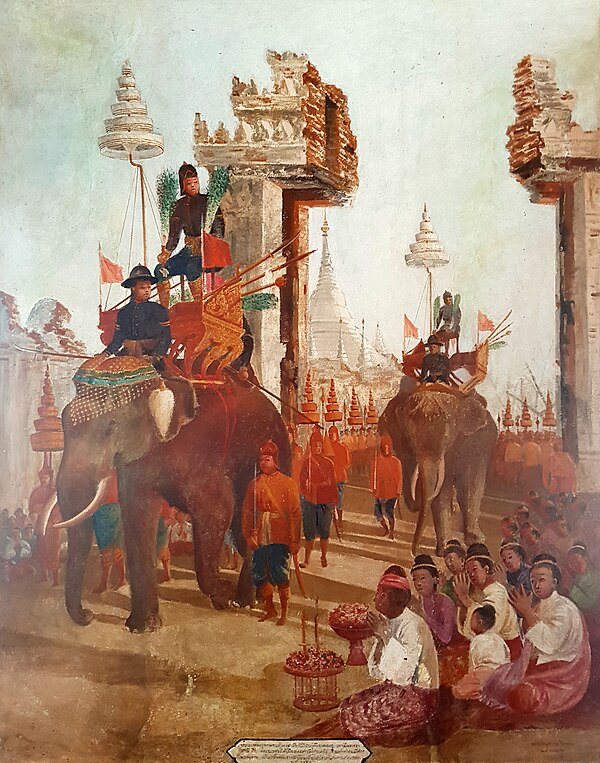
Ayutthaya Kingdom
Ayutthaya, ThailandThe Ayutthaya Kingdom emerged from the mandala/merger of three maritime city-states on the Lower Chao Phraya Valley in the late 13th and 14th centuries (Lopburi, Suphanburi, and Ayutthaya).[33] The early kingdom was a maritime confederation, oriented to post-Srivijaya Maritime Southeast Asia, conducting raids and tribute from these maritime states.
The first ruler of the Kingdom of Ayutthaya, King Uthong (r. 1351–1369), made two important contributions to Thai history: the establishment and promotion of Theravada Buddhism as the official religion to differentiate his kingdom from the neighbouring Hindu kingdom of Angkor and the compilation of the Dharmaśāstra, a legal code based on Hindu sources and traditional Thai custom. The Dharmaśāstra remained a tool of Thai law until late in the 19th century.
In 1511 Duke Afonso de Albuquerque dispatched Duarte Fernandes as an envoy to the Ayutthaya Kingdom, known then to Europeans as the "Kingdom of Siam". This contact with the West during the 16th century led to a period of economic growth as lucrative trade routes were established. Ayutthaya became one of the most prosperous cities in Southeast Asia. According to George Modelski, Ayutthaya is estimated to have been the largest city in the world in 1700 CE, with a population around one million.[34] Trade flourished, with the Dutch and Portuguese among the most active foreigners in the kingdom, together with the Chinese and Malayans. Even Luzones merchants and warriors from Luzon, Philippines were also present.[35] Philippines-Thailand relations already had precursors in that, Thailand often exported ceramics to several Filipino states as evidenced that when the Magellan expedition landed at the Cebu Rajahnate, they noted a Thai embassy to the king, Rajah Humabon.[36] When the Spanish colonized the Philippines via Latin America, Spaniards and Mexicans joined the Filipinos in trading at Thailand.
The reign of Narai (r. 1657–1688) was known for Persian and later, European, influence and the sending of the 1686 Siamese embassy to the French court of King Louis XIV. The Late Ayutthaya Period saw the departure of the French and English but growing prominence of the Chinese. The period was described as a "golden age" of Siamese culture and saw the rise in Chinese trade and the introduction of capitalism into Siam,[37] a development that would continue to expand in the centuries following the fall of Ayutthaya.[38] The Ayutthaya period was also considered as "a golden age of medicine in Thailand" due to progress in the field of medicine at that time.[39]
Ayutthaya's failure to create a peaceful order of succession and the introduction of capitalism undermined the traditional organization of its elite and the old bonds of labor control which formed the military and government organization of the kingdom. In the mid-18th century, the Burmese Konbaung dynasty invaded Ayutthaya in 1759–1760 and 1765–1767. In April 1767, after a 14-month siege, the city of Ayutthaya fell to besieging Burmese forces and was completely destroyed, thereby ending the 417-year-old Ayutthaya Kingdom. Siam, however, quickly recovered from the collapse and the seat of Siamese authority was moved to Thonburi-Bangkok within the next 15 years.[40]
